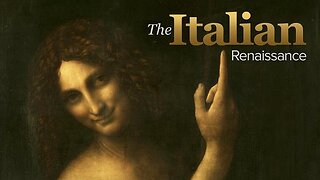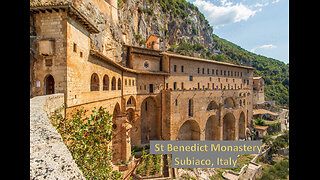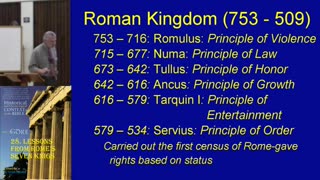The Italian Renaissance | The Eternal City - Rome (Lecture 22)
Lecture 22: Rome was as much an idea as it was a city and, as a consequence, had a much different character from that of Florence during the Renaissance. Its ancient heritage was everywhere to be seen in huge ruins. The legend of the Donation of Constantine (in which the emperor was said to have given rule of the western empire to Pope Sylvester when the capital was moved to Constantinople) permitted the pope to claim universal sovereignty. And the tombs of the apostles Peter and Paul made the city an attraction for pilgrims, ambitious scholars and clerics, and those who wished to serve or profit from them. Rome was, then, a cosmopolitan city of foreigners, with an enormous floating population of pilgrims and clergy from across Europe.
However, conflict damaged the city during the 14th century. Violence among the great Roman families resulted in the Babylonian Captivity, during which the pope abandoned Rome to reside in Avignon between 1305 and 1377. There were insufficient funds to maintain the great churches and palaces, and the population and the number of pilgrims and visitors fell precipitously. The Renaissance, then, came late to Rome.
Primary Source Texts:
Kenneth R. Bartlett, “The Church and the Papacy,” pp. 309–315, in The Civilization of the Italian Renaissance.
Petrarch, Book Without a Name (Liber Sine Nomine).
Secondary Sources:
Guillaume Mollat, The Popes at Avignon, 1305–1378.
Supplementary Reading:
Charles L. Stinger, The Renaissance in Rome.
Lecture 23: https://rumble.com/v4yjk2w-the-italian-renaissance-the-rebuilding-of-rome-lecture-23.html
-
 30:11
30:11
The Great Courses
1 month agoThe Italian Renaissance | Renaissance Venice (Lecture 14)
41 -
 30:25
30:25
The Great Courses
1 month agoThe Italian Renaissance | Venice - The Most Serene Republic (Lecture 13)
481 -
 8:54
8:54
CatholicReboot
1 month ago $0.02 earnedEpisode 2170: St Pope Urban I
153 -
 0:40
0:40
Improve Your Knowledge MK
2 months agoHow well do you know Italy? 🇮🇹 | General Knowledge Quiz #shorts
15 -
 2:16
2:16
Life Happens
2 months agoExploring Subiaco, Italy: A Spiritual and Artistic Haven
190 -
 7:05
7:05
CatholicReboot
1 month agoEpisode 2129: St. Flavia Domitilla
108 -
 0:17
0:17
Feel The Mediterranean
2 months agoDiscover Rome: A Journey Through Time
191 -
 38:31
38:31
BruceGore
2 months ago28. Lessons from Rome's Seven Kings
13 -
 2:44:08
2:44:08
malapasca
1 month agoVerona, Italy - The City Of Romeo And Juliet (region of Veneto, where Venice is)
11 -
 10:46
10:46
RetireEarlyLifestyle
1 month ago $0.01 earnedA Walking Tour Around Anzio, Italy
8